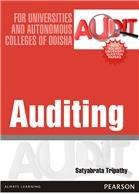Question
Eric Griffey, manager of the Household Products Division of the Dudley Company is trying to decide whether to launch a new model of food blender,
Eric Griffey, manager of the Household Products Division of the Dudley Company is trying to decide whether to launch a new model of food blender, BF97. Griffey is particularly excited about this proposal because it calls for producing the product in the companys old plant at Beaverton, Griffeys home town. During the last recession, Dudley had to shut down this plant and lay off its workers, many of whom had grown up with Griffey and were his friends. Griffey had been very upset when the plant was closed down. If BF97 were produced in the new plant, most of the laid-off workers would be rehired. Griffey asks Andrew Anderson, the management accountant of the Household Products Division to analyze the BF97 proposal. Through the years the company has found that its products have a useful life of 6 years, after which the product is dropped and replaced by another new product. Anderson gathers the following data.
a. BF97 will require new special-purpose equipment costing $900,000. The useful life of the equipment is 6 years, with a $140,000 estimated terminal disposal price at that time. However, the income tax authorities will not allow a write-off based on a life shorter than 9 years. Therefore, the new equipment would be written off over 9 years for tax purposes, using the straight-line depreciation method and assuming a zero terminal disposal price.
b. The old plant has a book value of $250,000 and is being depreciated on a straight- line basis at $25,000 annually. The plant is currently being leased to another company. This lease has 6 years remaining at an annual rental of $45,000. The lease contains a cancellation clause whereby the landlord can obtain immediate possession of the premises upon payment of $30,000 cash (fully deductible for income tax purposes).
c. Certain nonrecurring market-research studies and sales-promotion activities will amount to a cost of $300,000 at the end of year 1. The entire amount is deductible in full for income tax purposes in the year of expenditure.
d. Additions to working capital will require $200,000 at the outset and an additional $200,000 at the end of 2 years. This total is fully recoverable at the end of 6 years. e. Net cash inflow from operations before depreciation and income taxes are expected to be $400,000 in years 1 and 2, $600,000 in years 3-5, and $100,000 in year 6.
The after-tax required rate of return is 12%. The income tax rate is 36%.
Required Discussion Questions:
1. Use a net present-value analysis to determine whether Anderson should recommend launching BF97.
2. Anderson learns that the working capital required will be twice the amounts estimated in the preceding analysis. All other data remain unchanged. He revises his analysis and presents it to Griffey. Griffey is very unhappy with what he sees. He tells Anderson Try different assumptions and redo your analysis. I have no doubt that this project should be worth pursuing on financial grounds. Anderson is aware of Griffeys interest in supporting his home-town community. There is also the possibility that Griffey may be hired as a consultant by the new plant management after he retires next year. Why is Griffey unhappy with Andersons revised analysis? How should Anderson respond to Griffeys suggestions? Identify the specific steps that Anderson should take to resolve this situation.
The NPV should 83010.
Step by Step Solution
There are 3 Steps involved in it
Step: 1

Get Instant Access to Expert-Tailored Solutions
See step-by-step solutions with expert insights and AI powered tools for academic success
Step: 2

Step: 3

Ace Your Homework with AI
Get the answers you need in no time with our AI-driven, step-by-step assistance
Get Started


